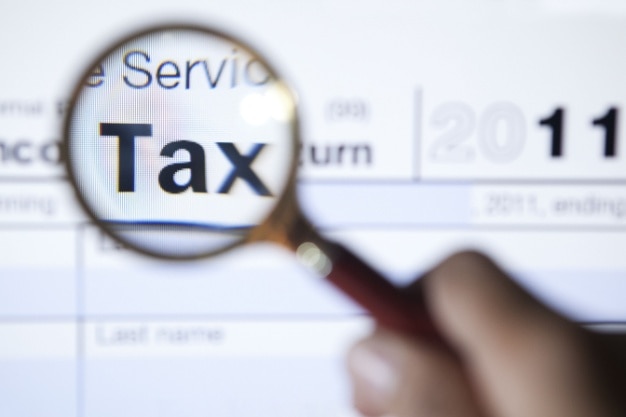Type of Retirement Accounts
January 3, 2023

Planning for retirement should come as early as possible to mark a proactive step towards a financially free retirement. Different retirement accounts exist based on who sponsors it, whether it’s tax-free or not, the saving limit on the account, and the distribution restrictions.
Understanding and choosing a retirement account that fits your goals is essential. The various retirement accounts are the 401(k), Traditional IRA, Roth IRA, SIMPLE IRA, etc.
Individual Retirement Accounts (IRAs)

An IRA is a more flexible retirement account that allows self-employed individuals save towards their retirement goals. Employed individuals can also open an IRA, although there is a limit on the total amount that can be contributed to these accounts in a year.
Individuals who own an IRA have a broader range of investments, such as stocks, bonds, and mutual funds. A self-directed IRA gives even wider access and allows owners to choose other commodities such as precious metals and real estate.
Different types of IRAs exist for individuals, including traditional and Roth IRAs. If you own a small business, you can also hold Simplified Employee Pension IRAs(SEP) and Savings Incentive Match Plans for Employees IRA (SIMPLE).
They differ in rules guiding eligibility, taxation, and withdrawal.
An IRA also holds a penalty of 10% for early withdrawal when you make a withdrawal before 59½ years, with very few exceptions.
Traditional IRA
A traditional IRA allows you to save your retirement money on a tax-deductible basis. This means your taxable income decreases by your contributions for every tax year. Withdrawals are taxed at retirement at your ordinary income rates.
Your IRA grows on a tax-deferred basis which is great for investment returns. The annual cash limit to a traditional is $6000 if you are less than 50 years with a catch-up contribution of $1000 if you are 50 or older.
Other factors contributing to your IRA taxation include having other retirement accounts or having your spouse have other retirement plans.
Owners of a traditional IRA are required to take a required minimum distribution (RMDs) starting from the age of 72years.
Roth IRA
A Roth IRA is another tax-advantaged IRA. With your Roth IRA, your income is not tax-deductible, but it is tax-free at withdrawal. Contributions are made after tax, and you enjoy tax-free investment gains.
The contributions regulations and limits are similar to a traditional IRA.
Roth IRAs have no required minimum distributions and allow the transfer of IRA accounts to beneficiaries who must distribute IRA funds by the 10th year after the owner’s death.
What is a Self-Directed IRA?

A self-directed IRA, as implied, is a special type of individual retirement account that allows the owner to take complete control of their account. A self-directed IRA gives more freedom to invest in assets that are not available to a regular IRA.
A self-directed IRA enables individuals to harness the opportunities of certain investment opportunities to strengthen and diversify their retirement savings.
Assets such as precious metals, commodities, real estate, and other alternative investments are available to a self-directed IRA.
Like the regular IRA, types of Self-directed IRA are the traditional and Roth IRA that differs in their tax advantages.
SDIRA is available through custodians who offer the different assets you might be interested in investing in. As it is self-directed, these custodians can offer no financial advice or benefit as part of their services.
A self-directed IRA allows you to choose assets congruent with your retirement goals and helps you realize these goals.
Precious metals Self-Directed IRA
One of the advantages of a self-directed IRA is that you can choose other assets that fit your investment appetite.
Investment savvy individuals who factor in inflation and currency devaluation in their retirement portfolio might opt for more stable and inflation-proof commodities like precious metals.
Precious metal self-directed IRAs, such as Gold IRAs, allow you to keep a portion of your investment savings in precious metals. Certain custodians are permitted to offer precious metal IRAs. The precious metals are then stored in an IRS-approved depository.
Precious metal IRAs are available as Traditional IRAs and Roth IRAs.
Employer-Sponsored Retirement Accounts
These types of retirement accounts are directed by an employer. That is, the account is funded from their payroll. This includes the 401(k) and 403(b) plans.
401(k)
The 401(k) is an employer-sponsored tax-advantaged retirement plan. The employee agrees that a portion of their income should go into an investment account, usually a mutual fund. The employer equally matches a part of the income going into their 401(k) plans.
A 401(k) plan allows you to contribute up to $20,500 into your accounts if you are less than 50 years with an additional $6500 for people over 50.
The money in a 401(k) is tax-free until withdrawal.
403(b)
This is similar to a 401(k). However, it is mainly offered by public institutions and charities.
Conclusion
Choosing a retirement account is an essential aspect of retirement planning. Individuals are usually caught between the various types of accounts that would favor their retirement goals.
Many individuals look for investments that can give them a sizable return while avoiding inflationary factors impacting their retirement savings. A self-directed precious IRA allows owners to diversify their portfolios in inflation-proof precious metals such as gold.
You can also rollover your 401(k) into a self-directed IRA. This can either be done directly when your employer transfers your assets to your custodian without you taking hold of them. The other option is an indirect IRA rollover that goes through you.
Contact a Precious Metals Specialist today by filling the form out on the right or by calling 888-503-1553.











